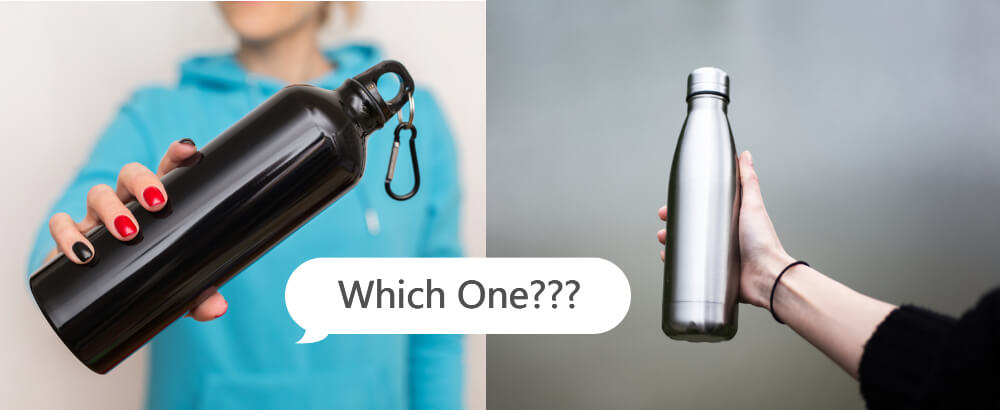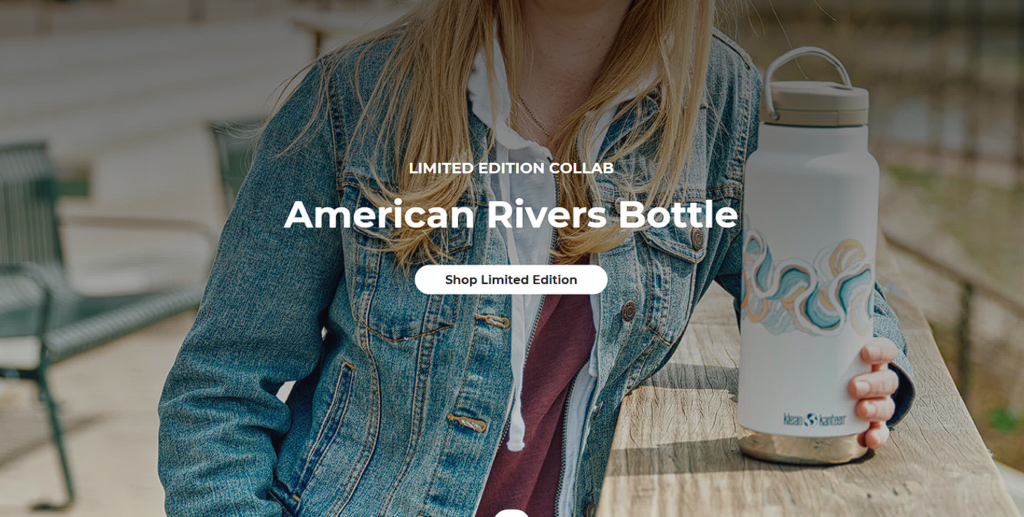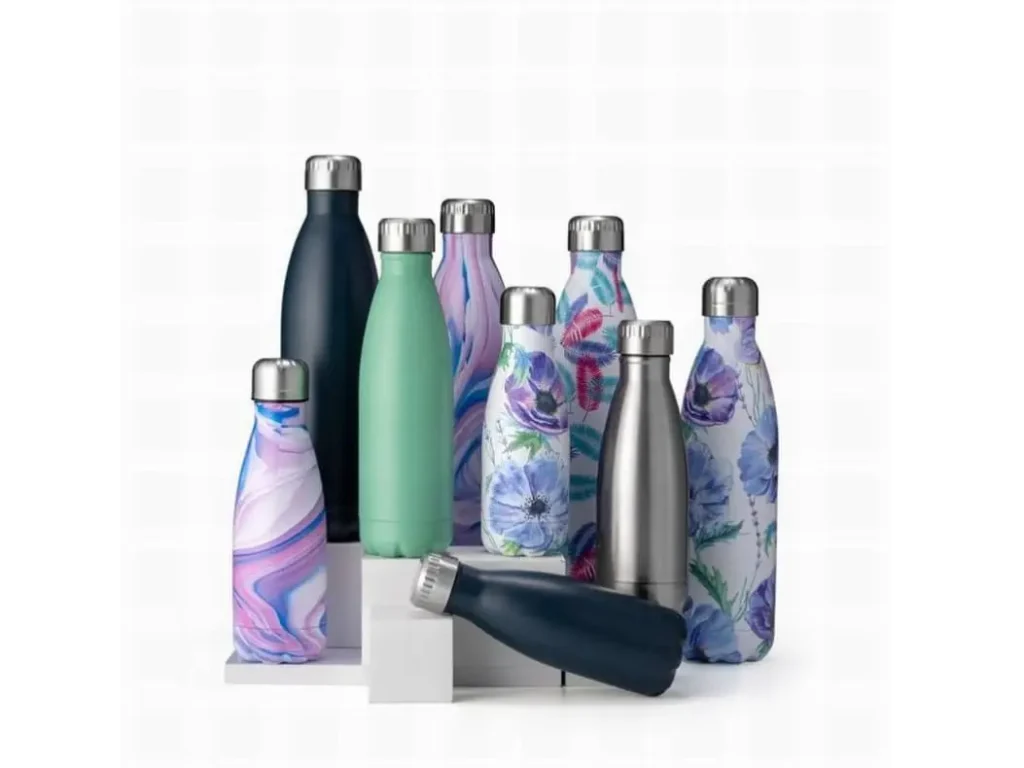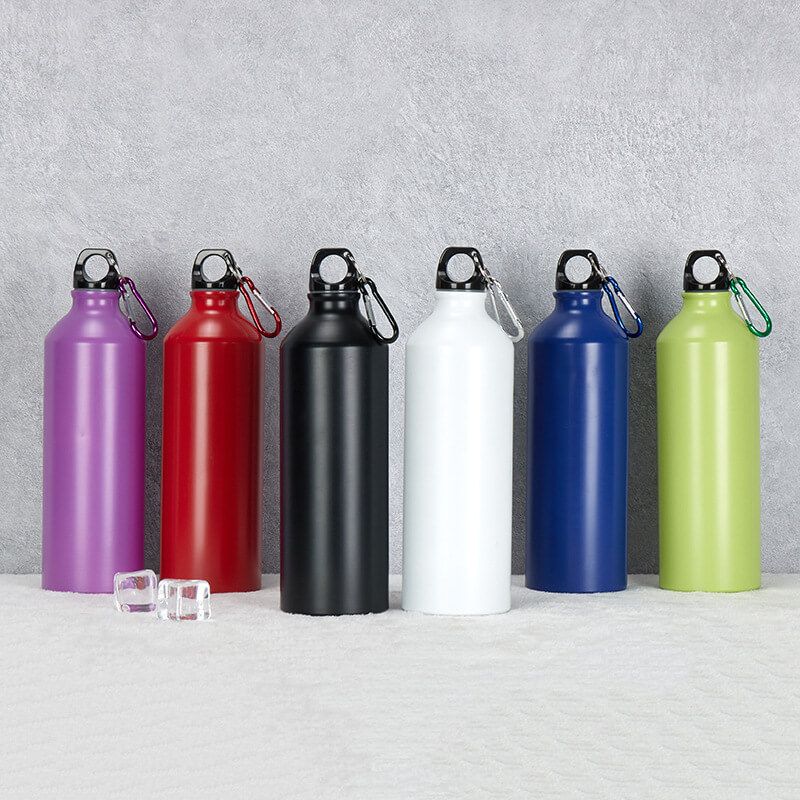
Are you torn between choosing a stainless steel water bottle or an aluminum one? Look no further! In this ultimate guide, we will provide you with all the information you need to make an informed decision.
We will delve into the debate between these two popular choices for reusable water bottles, comparing their durability, taste, health implications, environmental impact, and cost.
With our comprehensive analysis of each type and insights into popular brands, we aim to help you choose the right bottle based on your personal needs and preferences.
Firstly, let's understand the materials themselves.
Stainless steel is known for its strength and corrosion resistance, making it a durable option that can withstand everyday wear and tear.
On the other hand, aluminum is lightweight and also offers good durability but may be more prone to dents or scratches.
Both materials have their own advantages and potential disadvantages when it comes to various factors such as taste retention or potential health implications.
By examining these aspects in depth along with considering environmental impact and cost differences, we will equip you with all the knowledge necessary to confidently select the best water bottle for your lifestyle.
So let's jump in and explore this stainless steel versus aluminum debate together!
Stainless Steel vs Aluminum: The Debate
Now let's dive into the heated debate between stainless steel and aluminum water bottles, so you can make an informed choice that suits your needs and tastes.
Aesthetics
When it comes to aesthetics, both stainless steel and aluminum water bottles offer a sleek and modern look.
However, stainless steel is known for its polished finish, giving it a more premium appearance compared to the matte finish of aluminum bottles.
Thermal Insulation
In terms of thermal insulation, stainless steel is the clear winner.
Stainless steel water bottles are renowned for their ability to keep beverages hot or cold for extended periods of time due to their double-walled vacuum insulation.
On the other hand, aluminum bottles do not have the same level of insulation capabilities, making them less suitable for keeping drinks at desired temperatures.
Durability
When it comes to durability comparison, stainless steel once again takes the lead.
Stainless steel water bottles are known for their robustness and resistance to dents and scratches. They can withstand rough handling during outdoor activities without compromising their structural integrity.
Aluminum bottles, while generally durable, may be more prone to dents and scratches over time.
Manufacturing Processes
In terms of manufacturing processes, both stainless steel and aluminum require energy-intensive production methods.
However, stainless steel has a longer lifespan than aluminum in terms of reuse potential.
Additionally, stainless steel is highly recyclable with minimal loss in quality during recycling processes when compared to aluminum.
Environmental Sustainability
Considering environmental sustainability, both materials have their advantages and disadvantages.
Stainless steel is a sustainable option due to its durability and recyclability features but does require significant energy inputs during production.
Aluminum has a lower carbon footprint during initial production but requires more energy for recycling.
And ultimately contribute to the reduction of single-use plastic waste.
Choosing the Right Material
When it comes to selecting the perfect material for your reusable hydration companion, making the right choice is essential.
Material Properties
The material properties of stainless steel and aluminum play a crucial role in determining their suitability as water bottle materials.
Stainless steel is known for its durability and strength, making it highly resistant to dents and scratches.
On the other hand, aluminum is lightweight and offers excellent heat conductivity.
Both materials are commonly used outside of water bottles, with stainless steel being utilized in kitchen appliances and construction projects, while aluminum is widely employed in aerospace and automotive industries.
Longevity
Longevity factors are another important consideration when choosing between stainless steel and aluminum water bottles.
Stainless steel bottles have a reputation for their exceptional longevity due to their resistance to corrosion and rusting. They can withstand rough handling without compromising their structural integrity.
Aluminum bottles, although not as durable as stainless steel, can still provide long-lasting performance if properly cared for.
Taste
Preserving the taste of your beverages is also a critical factor when deciding on a water bottle material.
Stainless steel has an advantage over aluminum in this aspect since it does not impart any metallic taste or flavor to the drinks stored inside it.
On the other hand, some users may notice a slight metallic taste when using aluminum bottles, especially if they contain acidic liquids such as citrus juices or carbonated beverages.
Health concerns
Health concerns associated with different materials should also be taken into account.
Stainless steel water bottles are generally considered safe because they don't leach any harmful chemicals into your drink.
Aluminum bottles, however, may pose potential health risks if they have uncoated interiors or if they come into contact with acidic substances for prolonged periods of time.
environmental impact
Lastly, considering the environmental impact is crucial when making an eco-conscious decision about your water bottle material choice.
Stainless steel is highly recyclable and has a lower carbon footprint compared to virgin production processes.
Aluminum also boasts high recyclability but requires significant energy inputs during manufacturing.
Cost Comparison
Save money while making a sustainable choice with your reusable bottle by exploring the cost differences between stainless steel and aluminum options.
When considering which material to choose for your water bottle, affordability factors play an important role in the decision-making process.
Stainless steel water bottles tend to be more expensive upfront compared to aluminum ones.
On average, stainless steel bottles can range from $15 to $40, depending on the brand and features. In contrast, aluminum bottles are generally more affordable, with prices ranging from $10 to $25.
To help you understand the cost effectiveness of each option, here is a comparison table showcasing the price points of stainless steel and aluminum water bottles:
| Material | Price Range |
|---|---|
| Stainless Steel | $15 - $40 |
| Aluminum | $10 - $25 |
While it may seem like stainless steel bottles are pricier at first glance, it's essential to consider their long-term durability.
Stainless steel is known for its strength and longevity, making these bottles a worthwhile investment. They are less prone to dents and scratches compared to aluminum counterparts, ensuring that they will last for years without needing frequent replacements.
However, if budget considerations are a significant factor for you or you prefer lightweight options, an aluminum water bottle might be a more suitable choice.
These bottles are not only cost-effective but also lightweight and easy to carry around during outdoor activities or daily commutes.
Ultimately, the decision between stainless steel and aluminum comes down to personal preferences regarding price points and budget constraints.
To provide a visual representation of the benefits of stainless steel water bottles compared to aluminum ones, here is a comparison table:
| Feature | Stainless Steel Water Bottles | Aluminum Water Bottles |
|---|---|---|
| Durability | Highly durable | Less durable |
| Taste preservation | No metallic taste | Potential metallic taste |
| Health safety | BPA-free | BPA-free |
| Environmental impact | Lower carbon footprint | Higher carbon footprint |
| Cost | Moderately priced | Relatively inexpensive |
Popular Stainless Steel Brands
Among the highly-regarded options in the market, Klean Kanteen and Hydro Flask stand out as popular stainless steel water bottle brands. Both brands offer a wide range of sizes, styles, and features to cater to different user preferences.
Klean Kanteen is known for its durable construction and excellent insulation capabilities. Their bottles are made from high-quality stainless steel and feature double-wall vacuum insulation, keeping your drink hot or cold for hours.

Hydro Flask, on the other hand, is praised for its sleek design and innovative technology. Their TempShield insulation ensures that your beverage stays at the desired temperature throughout the day.

If you want to have more choice or comparison of the stainless steel water bottles, here you can check the top 10 stainless steel water bottles: top 10 brands of stainless steel water bottles
Popular Aluminum Brands
Aluminum water bottles are known for their lightweight design, making them ideal for those who prioritize portability and convenience. However, there is not as many brands as stainless steel water bottles, actually, there is nearly no brands specially selling aluminum water bottles, but we still found some for your check and compare, here are the links below:

https://www.mountainvalleyspring.com/pages/aluminum-bottle
https://www.bulletinbrands.com/aluminum-water-bottles.html
Choosing the Right Bottle
To find the perfect water bottle for your needs, it's important to consider various factors such as durability, cost, insulation capabilities, and eco-friendliness.
When choosing between stainless steel and aluminum bottles, there are a few key factors to keep in mind.
Firstly, think about your personal preferences.
Stainless steel bottles are known for their durability and longevity. They can withstand rough handling and are less likely to dent or scratch compared to aluminum bottles.
On the other hand, aluminum bottles are lightweight and more affordable than stainless steel ones. If you prioritize portability and cost-effectiveness, then an aluminum bottle may be the better choice for you.
Secondly, consider the environmental impact of each material.
Stainless steel is highly recyclable and has a low carbon footprint compared to aluminum production. Aluminum requires more energy-intensive processes during manufacturing but can also be recycled indefinitely without losing its quality. If sustainability is a priority for you, both options have their pros and cons.
Lastly, take into account health and safety considerations.
Stainless steel water bottles are naturally BPA-free and don't leach harmful chemicals into your drink over time.
Aluminum bottles typically have an inner lining that prevents direct contact between the metal and liquid but may contain trace amounts of BPA in this lining.
If avoiding potential health risks is important to you, stainless steel would be the safer choice.
Ultimately, the decision between stainless steel and aluminum water bottles boils down to your individual needs and priorities.
Consider factors like durability, personal preferences, environmental impact, longevity, and health concerns before making a purchase ensuring that you choose a bottle that aligns with your lifestyle choices while keeping yourself hydrated on-the-go!
Care and Maintenance Tips
Taking care of your reusable bottle is essential to ensure its longevity and keep it in top condition for years to come. Here are some tips for cleaning and maintaining both stainless steel and aluminum water bottles.
Use warm soapy water and a bottle brush
To clean your stainless steel or aluminum water bottle, use warm soapy water and a bottle brush. Make sure to thoroughly rinse the bottle after washing to remove any soap residue.
For stubborn stains or odors, you can add a mixture of vinegar and baking soda, let it soak for a few hours, and then scrub with the bottle brush.
Removing odors
If your reusable bottle develops an unpleasant odor, fill it with warm water and add a teaspoon of bleach or white vinegar. Let it sit overnight before rinsing thoroughly.
Alternatively, you can use a mixture of lemon juice and baking soda as a natural deodorizer.
Proper storage
When not in use, store your reusable bottle with the lid off to allow air circulation and prevent moisture buildup that can lead to mold or mildew growth.
It's also important to keep the bottle in a cool, dry place away from direct sunlight.
Avoiding scratches
Both stainless steel and aluminum bottles can develop scratches over time. To minimize this risk, avoid using abrasive cleaners or scrub brushes that could damage the surface. Instead, opt for soft sponges or microfiber cloths when cleaning.
Maintaining insulation
If you have an insulated stainless steel water bottle that keeps beverages hot or cold for extended periods, make sure to follow proper care instructions provided by the manufacturer.
Avoid using harsh chemicals that could compromise the insulation properties of the bottle.
By following these care and maintenance tips, you can keep your stainless steel or aluminum water bottle in excellent condition for years while ensuring its cleanliness and functionality.
Remember to always check specific instructions from the manufacturer for any additional recommendations tailored to your specific brand or model of water bottle.
Final Thoughts
In conclusion, as you weigh the pros and cons of stainless steel and aluminum water bottles, remember to consider your personal needs and preferences in order to make an informed decision that will keep you hydrated on all your adventures.
Both stainless steel and aluminum water bottles have their advantages and disadvantages, so it's important to think about what matters most to you.
If durability and long-term use are top priorities, then stainless steel might be the better choice for you. On the other hand, if lightweight and cost are more important factors, then aluminum could be the way to go.
Ultimately, user preferences play a significant role in deciding between stainless steel and aluminum water bottles.
Some people may prefer the taste preservation that comes with using stainless steel bottles, while others may not mind a slight metallic taste from aluminum bottles.
Additionally, considering how you plan to use your water bottle can also guide your decision-making process.
If you're frequently on outdoor adventures or engage in rugged activities like hiking or camping, a durable stainless steel bottle might be ideal.
However, if you primarily need a bottle for everyday use at the office or gym workouts where weight is a factor, an aluminum bottle could be more suitable.
When choosing between stainless steel and aluminum water bottles, it's crucial to evaluate both the pros and cons of each material based on your own preferences and needs.
Consider factors such as durability, taste preservation, health implications, environmental impact, cost, and specific user scenarios.
By carefully weighing these aspects against your personal requirements for long-term use of a water bottle, you can confidently make a well-informed decision that aligns with your lifestyle choices.
Frequently Asked Questions
Can stainless steel and aluminum water bottles be used for hot beverages?
For hot beverages, we suggest stainless steel water bottle more than aluminum water bottles, as normally aluminum water bottles are single wall, it will be very hot, and stainless steel water bottles have insulated options that are ideal for hot beverages. They have excellent heat retention, temperature control, and thermal properties, making them suitable for keeping drinks hot.
Are stainless steel and aluminum water bottles dishwasher safe?
Stainless steel and aluminum water bottles can be dishwasher safe, but it's important to check the manufacturer's instructions. Both materials have good material durability and can withstand cleaning methods. However, consider the environmental impact and temperature resistance when choosing a bottle.
Can stainless steel or aluminum water bottles be personalized or customized?
Yes, both stainless steel and aluminum water bottles can be personalized or customized. Many brands offer options for engraving, custom designs, and unique bottle designs to allow for customization possibilities.
Are there any specific regulations or standards for the production of stainless steel and aluminum water bottles?
Yes, there are specific regulations and standards for the production of stainless steel and aluminum water bottles. These include manufacturing processes, durability and longevity, health and safety considerations, environmental impact, and cost effectiveness.
Can stainless steel and aluminum water bottles be recycled?
Stainless steel and aluminum water bottles can be recycled, reducing their environmental impact. Both materials are durable, but stainless steel is more resistant to dents and scratches. Aluminum bottles may have lower production costs but can potentially leach chemicals into the water.



